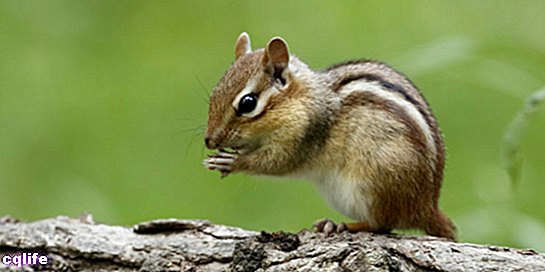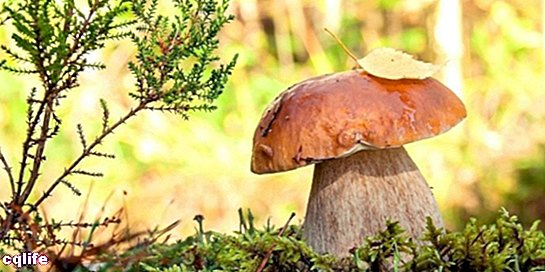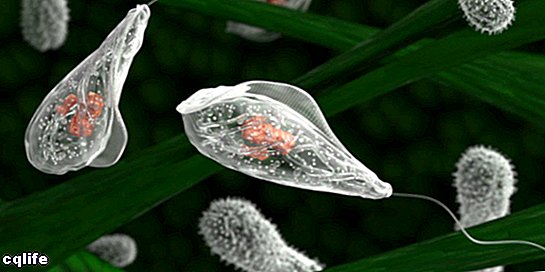- What are multicellular organisms?
- Origin of multicellular organisms
- Characteristics of multicellular organisms
- Vital functions of multicellular organisms
- Examples of multicellular organisms
- Single-celled organisms
We explain what multicellular organisms are, how they originated and their characteristics. Also, its vital functions and examples.

What are multicellular organisms?
Multicellular organisms are all those forms of life whose bodies are composed of a diversity of organized, hierarchical and specialized cells, whose joint functioning guarantees the stability of the life. Are cells integrate tissues, organs and systems, which cannot be separated from the whole and exist independently.
Many multicellular organisms always arise from a single cell called a zygote, the result of the sexual union of two gametes (female and male). The zygote is subdivided in an accelerated way throughout the gestation, forming the totality of the body of the creature that, from its birth, begins to grow. However, there are also multicellular organisms capable of reproducing asexually, such as plants and fungi.
In general terms, the kingdoms of life that possess multicellular organisms are three: animalia, plant Y fungi. In the cells of these living beings a cell nucleus is found with the DNA complete of the individual, that is, they are eukaryotic organisms.
Origin of multicellular organisms

How exactly the first multicellular organisms arose from primitive single-celled life is unknown, but there are three theories:
- The symbiotic theory. Multicellular organisms would be the evolutionary product of a new type of relationship of cooperation between two or more cells of species different whose treatment was so close that they ended up forming the same individual.
- The cellularization theory. According to this theory, the first multicellular organisms would have arisen when a unicellular organism developed several nuclei, later dividing its cytoplasm through new plasma membranes to give each nucleus an independence that ended up being a cell within another cell.
- The colonial theory. In this case, it is assumed that the joint colonial life of cells of the same type and species produced a mechanism of symbiosis increasingly complex, which led to a distribution of reproductive tasks, allowing the rest of the colony to dedicate themselves to forming tissues with other types of functions.
Characteristics of multicellular organisms

Heterotrophic organisms consume organic matter from other living things.
Multicellular organisms have varying degrees of complexity, ranging from a tiny alga to an elephant or a giant sequoia. Their bodies are made up of millions of cells integrated into organs and tissues that function in a coordinated and independent way, and are called "systems." Of the correct functioning of said systems depends on the life of the individual, so that once the deathFor whatever reason, all cells in the body will gradually die (because they are interdependent).
The cells of these organisms can broadly be of two different types: those endowed with the DNA complete body of the individual (somatic cells) and others that have only half and are created for sexual reproductive purposes (germ cells or gametes). However, each cell in the body of the organism has a function, a set of biological instructions and can become sacrificial for the good of the others. This implies high levels of communication, cooperation and cellular specialization.
Multicellular organisms can be autotrophs (like plants) if they can synthesize the body's nutrients from inorganic material and natural energy (such as sunlight), Y heterotrophs if they require the consumption of organic material coming from other living beings for their oxidation and thus obtain chemical energy to hold the metabolism.
Vital functions of multicellular organisms

The multicellular organisms fulfill, like the unicellular ones, with the vital basic functions but they do it from much more complex processes that involve the replacement of old cells with new cells and the generation of new tissues.
- Nutrition. Multicellular organisms possess a digestive system which consists of a set of organs and tissues responsible for preparing, dissolving and digesting the food, so that its nutrients enter the metabolism and are translated into energy to sustain all the cells of the body.
- Increase. If the growth of unicellular organisms is limited by the size of the cell, in the case of multicellular organisms it is limited by the number of them according to the joint pattern established in DNA. Multicellular organisms grow according to an established genetic plan and according to the availability of nutrients so that new additional cells are generated and incorporated into the system.
- Reproduction. The reproduction of the cells of the multicellular organism is constant since replacements are being generated for damaged tissues, for old and dying cells, or to fulfill specific tasks such as defensive cells. On the other hand, the organism as a whole reproduces once the maturity, through various asexual or sexual mechanisms, depending on the species. Whatever the case, certain types of reproductive cells are generated and are responsible for building a complete new individual (unlike the bipartition processes of unicellular life in which two emerge from an individual).
Examples of multicellular organisms

There are millions of examples of multicellular organisms in the world around us: we ourselves are a perfect case. Some examples are:
- All the animals. Terrestrial, marine, flying, vertebrates or not, from insects to reptiles and going through the mammals and the birds.
- All the mushrooms. Both saprophytes and parasites, in all habitats, with the notable exception of the yeast.
- All plants. Except for some cases of unicellular algae, the plant kingdom is made up of multicellular organisms, regardless of their habitat or structural complexity.
Single-celled organisms

A unicellular organism is a form of life whose body is made up of a single cell. These cells do not form any type of tissue, structure or joint body with others of its species, although they can live together as a colony. It is, then, about microscopic organisms whose body is a single cell. They are often classified as protists (when are they eukaryotes, that is, they have cell nucleus) or bacteria and arches (when they are prokaryotes, that is, they lack a cell nucleus).
